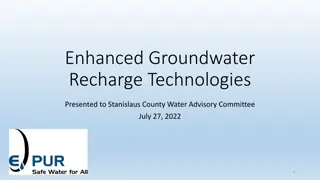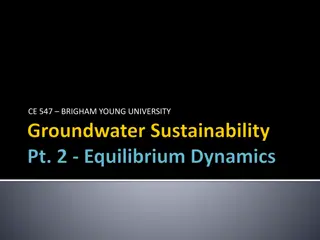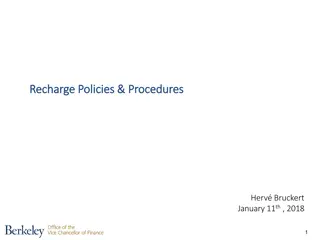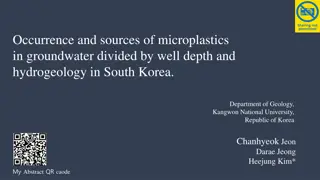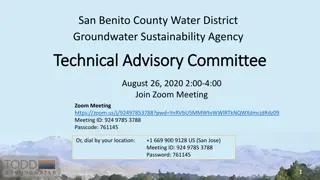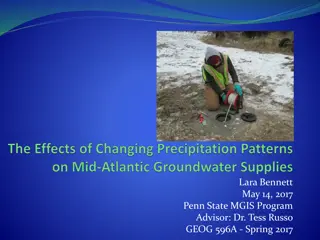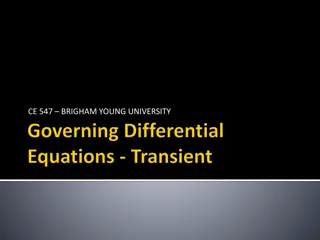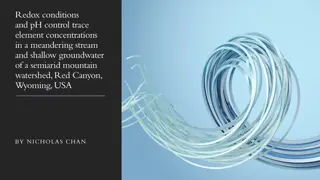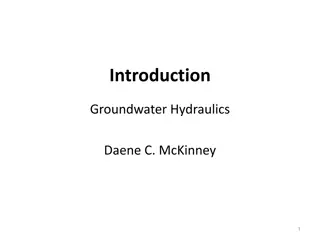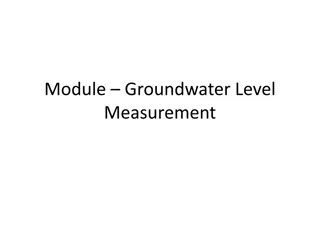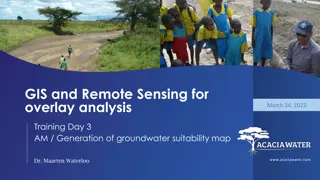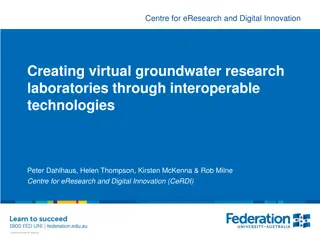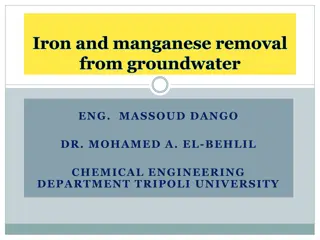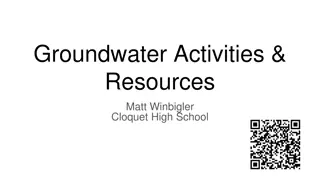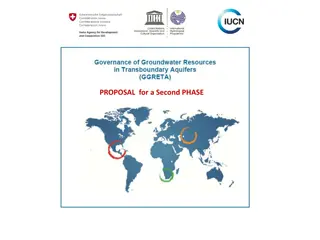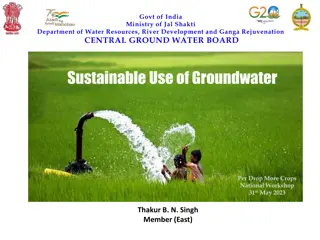Understanding Groundwater: Occurrence, Recharge, and Movement
Groundwater occurs when water seeps into the subsurface through cracks and pores in rocks and soil, forming the water table. Recharge happens naturally through processes like precipitation and snowmelt, as well as artificially through methods like recharge wells and water spread over land. The movement of groundwater is influenced by factors like hydraulic gradients and conductivities, leading to both recharge and discharge areas. It is important to consider the topography and flow of groundwater to ensure proper management and avoid contamination risks.
Download Presentation

Please find below an Image/Link to download the presentation.
The content on the website is provided AS IS for your information and personal use only. It may not be sold, licensed, or shared on other websites without obtaining consent from the author. Download presentation by click this link. If you encounter any issues during the download, it is possible that the publisher has removed the file from their server.
E N D
Presentation Transcript
Occurrence of Ground Water How ground water occurs in rocks Ground water occurs when water recharges the subsurface through cracks and pores in soil and rock Shallow water level is called the water table
Recharge Natural Artificial Precipitation Melting snow Infiltration by streams and lakes Recharge wells Water spread over land in pits, furrows, ditches Small dams in stream channels to detain and deflect water Natural and artificial recharge of an aquifer 2
Groundwater recharge and discharge Water enters groundwater systems in recharge areas by hydraulic gradients and hydraulic conductivities, to discharge areas. The rate of movement of ground water from recharge areas to discharge areas depends on the hydraulic conductivities of the aquifers and on the hydraulic gradients.
Groundwater recharge and discharge Natural discharge includes: the flow of springs and the seepage of water into stream channels or wetlands evaporation from the upper part of the capillary fringe and the low-lying areas. Discharge is a continuous process as long as groundwater heads are above the level at which discharge occurs. Between periods of recharge, groundwater heads decline, and the rate of discharge also declines.
Groundwater movement and topography Groundwater moved by effect of gravity. The groundwater in the saturated zone moves from interstream areas toward streams or the coast. The water table usually is a subdued replica of the land surface. Septic tanks, waste ponds, and other waste-disposal sites should not be located downhill from supply wells.
Groundwater flow net The equipotential lines, connects points of equal head and represents the height of the water table, or the potentiometric surface of a confined aquifer, above a datum plane.
Groundwater flow net Flow net. Flow lines originate in the area of higher heads that indicates the presence of recharge to the aquifer in this area. The stream gains water from the aquifer due to decreasing head into the stream. The stream is known as effluent stream.
Groundwater flow net Flow net. The stream gains water in its headwaters and loses water as it flows downstream. In the gaining reaches, the equipotential lines form a V pointing upstream; in the losing reach, they form a V pointing downstream, and the stream is called effluent and influent at upstream and respectively. downstream


